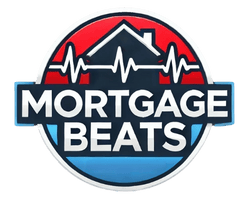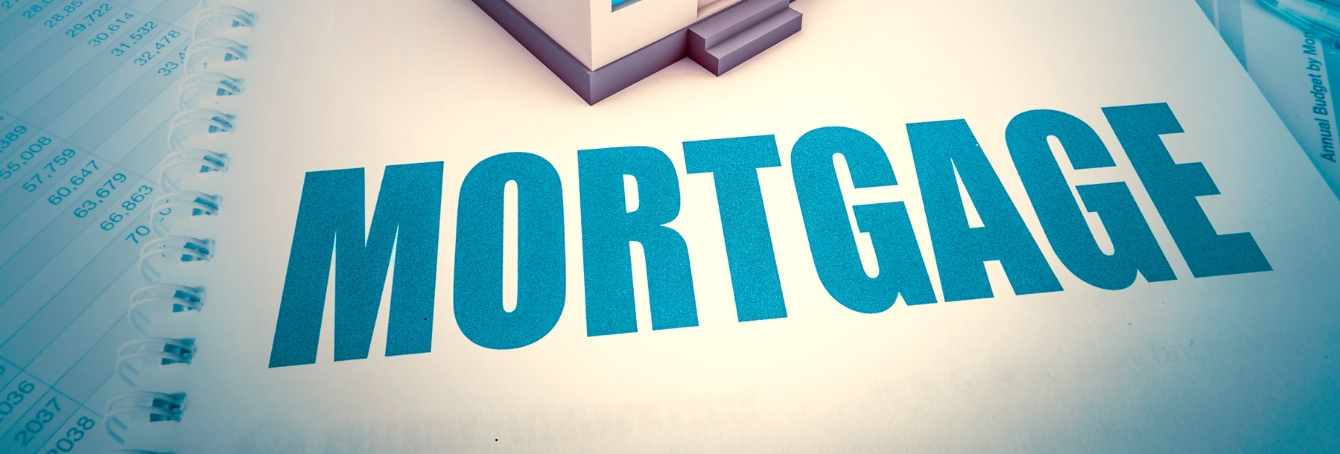Understanding the Basics: HELOCs and Home Equity Loans Defined
Home Equity Lines of Credit (HELOCs) and home equity loans both allow homeowners to borrow against their property’s equity, but they function quite differently. A HELOC operates like a credit card with a revolving balance, where you can draw funds as needed up to your credit limit during a specified draw period. In contrast, a home equity loan provides a lump sum upfront with fixed monthly payments over a set term, much like a traditional mortgage. Both options use your home as collateral, which typically results in lower interest rates compared to unsecured borrowing options.
The fundamental distinction lies in their structures—HELOCs offer flexibility for ongoing or unpredictable expenses, while home equity loans provide stability for one-time, well-defined costs. HELOCs generally feature variable interest rates that fluctuate with market conditions, whereas home equity loans lock in a fixed rate for the entire repayment period. This core difference shapes nearly every aspect of how borrowers interact with each product, from initial access to funds through final payment.
At NorCal Real Estate & Financial Services, we help homeowners understand these foundational concepts before exploring specific products. Our advisors explain how each option fits into broader financial strategies, ensuring clients make informed decisions aligned with both their immediate needs and long-term goals. We believe clear understanding of these basic mechanics prevents costly mismatches between borrowing tools and intended uses.
Key Structural Differences: How These Products Operate
HELOCs typically have two distinct phases: the draw period (usually 5-10 years) when you can access funds and make interest-only payments, followed by the repayment period (often 10-20 years) when you can no longer borrow and must pay both principal and interest. This structure makes them ideal for projects with uncertain timelines or costs that may evolve over several years. Home equity loans, conversely, follow a straightforward amortization schedule from day one, with fixed payments that include both principal and interest until the debt is fully repaid.
Accessing funds also differs significantly between the two products. HELOC borrowers receive checks or debit cards to tap their credit line as needed, while home equity loan recipients get a single lump-sum disbursement at closing. Some HELOCs allow conversions of portions of the balance to fixed-rate terms during the draw period—a hybrid feature that has grown increasingly popular in recent years. Home equity loans lack this flexibility but provide certainty that appeals to borrowers uncomfortable with variable-rate debt.
NorCal Real Estate & Financial Services helps clients navigate these structural nuances to select products matching their financial personalities and project requirements. Our specialists explain how draw periods, repayment terms, and access methods translate into real-world borrowing experiences. We’ve found that borrowers who fully grasp these operational differences make more confident, appropriate product selections.
Interest Rate Considerations: Variable vs. Fixed
HELOCs predominantly feature variable interest rates tied to prime rate benchmarks, meaning payments can rise or fall with broader economic conditions. Many HELOCs include rate caps that limit how much the interest can increase during specific periods or over the life of the loan, providing some protection against drastic spikes. In contrast, home equity loans offer fixed rates that remain constant throughout the loan term, allowing for precise long-term budgeting but potentially starting higher than initial HELOC rates.
The current interest rate environment significantly influences which option makes more financial sense. When rates are low but expected to rise, locking in a fixed-rate home equity loan often proves advantageous. Conversely, when rates are high but projected to decline, a HELOC’s variable rate might become increasingly attractive over time. Some lenders now offer fixed-rate HELOC options or conversion features that attempt to blend the benefits of both approaches, though these hybrid products often involve tradeoffs in other areas.
At NorCal Real Estate & Financial Services, we analyze rate trends and economic forecasts to advise clients on which rate structure best suits their timeline and risk tolerance. Our advisors explain how rate changes could affect payments under various scenarios, helping borrowers make informed choices rather than gambling on future market movements. We believe interest rate decisions should align with overall financial strategies rather than reflect short-term market predictions.
Payment Structures and Cash Flow Implications
HELOCs typically require interest-only payments during the draw period, resulting in lower initial payments that increase significantly once repayment of principal begins. This structure can benefit borrowers with irregular income streams or those expecting higher earnings in future years. However, the payment shock when entering the repayment phase surprises some borrowers who didn’t plan for the substantial increase, particularly if they’ve drawn heavily on their line.
Home equity loans provide consistent payments throughout the loan term, making them easier to incorporate into long-term budgets. The predictable nature of these fixed payments appeals to borrowers who prioritize stability over flexibility, especially those on fixed incomes or with tight monthly cash flows. However, borrowers pay interest on the entire loan amount from day one, unlike HELOCs where interest only accrues on funds actually used.
NorCal Real Estate & Financial Services helps clients project payment scenarios for both options across various time horizons. We use customized calculators that show exactly how payments would evolve with a HELOC versus remain steady with a home equity loan. This transparent comparison prevents unpleasant payment surprises and ensures borrowers select products that align with both their current budgets and future financial projections.
Flexibility Factors: Accessing and Repaying Funds
HELOCs shine when borrowers need ongoing access to funds for unpredictable expenses like multi-phase renovations or emergency repairs. The ability to draw, repay, and redraw as needed similar to a credit card but with much lower rates—makes HELOCs ideal for projects without firm timelines or budgets. Many HELOCs also allow additional payments or early payoff without penalties, providing repayment flexibility to match the borrowing flexibility.
Home equity loans lack this adaptability once funded, as borrowers receive the entire amount upfront and cannot access additional funds without applying for a new loan. However, this structure prevents the temptation to overspend that some HELOC users experience when viewing available credit as spending capacity. Home equity loans effectively enforce discipline by providing a set amount that must cover all projected costs from the outset.
At NorCal Real Estate & Financial Services, we assess each client’s financial discipline and project specifics when evaluating flexibility needs. Our advisors help determine whether a borrower would benefit more from HELOC’s revolving access or the structured containment of a home equity loan. We’ve found that self-aware borrowers who honestly assess their spending tendencies make better long-term decisions about which flexibility profile suits them best.
Cost Comparisons: Fees and Long-Term Expenses
Both HELOCs and home equity loans typically involve closing costs including appraisal fees, origination charges, and title insurance, though these are often lower than for primary mortgages. Some lenders offer no-closing-cost options by slightly increasing interest rates instead. HELOCs may carry annual fees or minimum draw requirements in addition to standard closing costs, while home equity loans usually have simpler fee structures focused on upfront charges.
Long-term cost comparisons depend heavily on how the borrower uses each product. HELOCs often prove cheaper for borrowers who need smaller, intermittent amounts over time since interest only accrues on outstanding balances. Home equity loans generally cost less for those needing the full amount immediately and keeping it borrowed long-term, as their fixed rates often start lower than HELOC variable rates in rising rate environments.
NorCal Real Estate & Financial Services provides detailed cost analyses that account for both upfront fees and projected interest expenses under various usage scenarios. Our advisors explain how different draw patterns would affect total HELOC costs compared to a home equity loan’s predictable expense structure. This comprehensive cost perspective helps prevent decisions based solely on initial rates or fees without considering the complete financial picture.
Risk Assessment: Which Option Carries More Uncertainty
HELOCs introduce several risks that home equity loans avoid, primarily related to their variable rates and potential payment shocks. Borrowers could face significantly higher payments if interest rates rise during their draw period or when transitioning to repayment. Some HELOCs also include “demand clauses” allowing lenders to freeze or reduce credit lines under certain conditions a risk that became painfully real for many borrowers during the 2008 financial crisis.
Home equity loans provide more stability but carry their own risks, particularly the obligation to repay the full borrowed amount regardless of whether all funds were needed or used effectively. Borrowers who take large home equity loans for specific projects then encounter unexpected life changes may find themselves stuck with debt exceeding their current needs. Both products put your home at risk if payments become unmanageable, though this risk is inherent to any secured borrowing.
At NorCal Real Estate & Financial Services, we help clients evaluate these risks in the context of their overall financial resilience. Our advisors stress-test both options against potential economic and personal scenarios to identify which risks each borrower is best prepared to handle. We believe informed risk assessment leads to more sustainable borrowing decisions that withstand life’s inevitable uncertainties.
Ideal Use Cases for Each Product
HELOCs excel for ongoing, evolving needs like multi-year home renovations where costs are difficult to predict upfront. They also suit borrowers who want a financial safety net for emergencies while avoiding interest costs until funds are actually needed. Other ideal HELOC uses include bridging temporary cash shortfalls, funding education expenses over several years, or covering irregular large expenses like investment property repairs.
Home equity loans work best for one-time, well-defined expenses like kitchen remodels with fixed contractor bids, debt consolidation of known amounts, or major purchases requiring full payment upfront. They’re also preferable when interest rates are low and borrowers want to lock in long-term savings, or when predictable payments are essential for tight budgets. Home equity loans often make more sense than HELOCs for financially conservative borrowers who value certainty over flexibility.
NorCal Real Estate & Financial Services matches clients with products based on their specific use cases rather than pushing one-size-fits-all solutions. Our advisors ask detailed questions about planned fund usage to determine whether a HELOC’s flexibility or a home equity loan’s stability better serves the intended purpose. This use-focused approach prevents product mismatches that could lead to frustration or unnecessary costs down the road.
Qualification Requirements and Approval Processes
Both HELOCs and home equity loans require sufficient home equity (typically at least 15-20% after borrowing), acceptable credit scores (usually 680+ for best terms), and verifiable income. HELOCs sometimes have slightly stricter requirements because their revolving nature presents more uncertainty for lenders. Debt-to-income ratios below 43% are generally needed for both, though some lenders may allow higher ratios with compensating factors like substantial assets or exceptional credit.
Approval processes are similar, involving application, documentation, home appraisal, and underwriting review. HELOCs may fund faster since the initial credit limit approval doesn’t require determining an exact loan amount. Some lenders offer streamlined processes for existing customers or automated approvals for smaller credit lines. Home equity loans typically take slightly longer as the fixed amount requires more precise underwriting and documentation.
At NorCal Real Estate & Financial Services, we prepare clients for the qualification process by reviewing their financial profiles in advance. Our advisors suggest credit improvements or documentation strategies that could enhance approval chances or secure better terms. We also help borrowers understand how different lenders evaluate applications, matching them with institutions most likely to approve their specific situations.
Making Your Decision: A Step-by-Step Evaluation Framework
Choosing between a HELOC and home equity loan requires systematic evaluation of multiple factors. Start by defining your funding needs—total amount required, draw timing, and repayment capacity. Next, assess your risk tolerance regarding interest rate fluctuations and payment variability. Then consider your financial discipline in managing revolving credit versus lump-sum debt. Finally, compare current rate environments and projected trends to determine whether variable or fixed rates make more sense.
Your timeline also matters significantly—short-term needs under five years often favor HELOCs, while longer-term borrowing may benefit from home equity loan stability. Personal cash flow considerations should factor into whether you prefer interest-only payments initially or consistent principal-plus-interest payments throughout. Tax implications, while secondary to core financial factors, may also influence your decision depending on how you plan to use the funds.
At NorCal Real Estate & Financial Services, we guide clients through this evaluation framework with customized checklists and decision tools. Our advisors help weigh each factor based on your unique circumstances rather than relying on generic advice. We believe this structured approach leads to better borrowing decisions that serve homeowners well throughout the life of their equity-based financing.
Conclusion
The HELOC versus home equity loan decision hinges on balancing flexibility against stability, variable costs against fixed payments, and immediate needs against long-term financial plans. Neither product is inherently superior—the best choice depends entirely on your specific situation, project requirements, and financial personality. Today’s lending market offers competitive options for both products, making this an ideal time for homeowners to leverage their equity strategically.
At NorCal Real Estate & Financial Services, we transform this complex decision into a clear, manageable process. Our specialists analyze your complete financial picture alongside your funding needs to recommend the optimal equity access strategy. We consider not just today’s rates and terms but how each option will perform over your anticipated usage period and repayment timeline.
If you’re considering tapping your home’s equity and want expert guidance choosing between a HELOC and home equity loan, contact NorCal Real Estate & Financial Services today. Our advisors will evaluate your options objectively, explain the pros and cons in plain language, and help you select financing that aligns with both your immediate goals and long-term financial well-being. With the right information and professional support, you can leverage your home’s value confidently and responsibly.
Ready To Get The Best Financial Advise, Email us at: Chris@mortgagebeats.com



